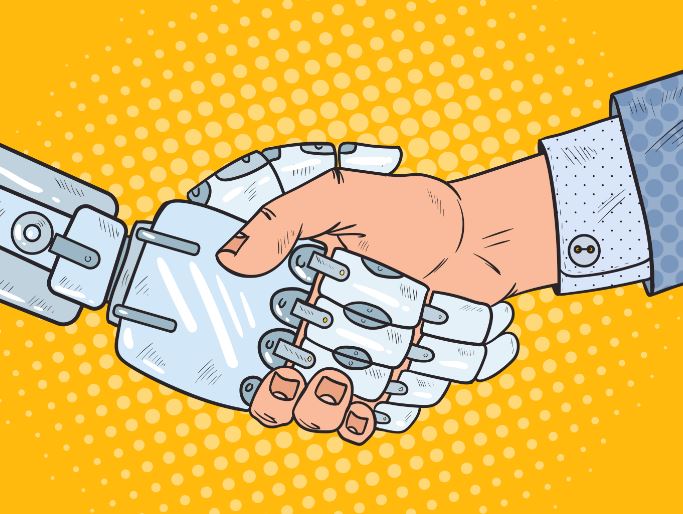
Today, digital disruption is ruthlessly redrawing commerce. Predicting how industry will fare further down the line has never been more difficult, and with this level of swift change comes uncertainty. Organisations are now having to navigate unchartered waters, cognizant that if they don’t rapidly transform, they could face a turbulent future, or no future at all. After all, 88per cent of Fortune 500 companies that were thriving less than 50 years ago are no longer on the list – a worrying sign for any business regardless of how stable they may feel now.

Although every industry understands that standing still is the path to becoming obsolete, the need to adapt is an absolute prerequisite of the business, with the majority all too aware that digital transformation should be more widespread in their organisation.
All in all, there’s a long way to go to becoming a fully-fledged digital business. To look into this, we set out to explore, with the help of experts at the Institute for the Future, what business will look like 10-15 years into the future. If organisations are struggling today – what does tomorrow have in store for them? What role can we play in helping navigate these murky waters?
A whole new world, underpinned by emerging technologies solving tomorrow’s problems
In the main, there tends to be two extreme perspectives about the future: the anxiety-driven issue of unemployment or the optimistic view that technology will solve all of the social-environmental problems of the world. The reality is the future will likely fall somewhere in the middle. As it has already done so in the past 10-15 years, technology will again reshape our lives by 2030 and these changes will present new opportunities for humans.
Emerging technologies such as Artificial Intelligence (AI), Augmented Reality (AR), Virtual Reality (VR), robotics and IoT to name a few, will accelerate and augment the digital direction we’re heading in. Underpinned by massive advancements in software, big data and processing power, we’ve entered a world with amazing new possibilities.
As well as presenting new opportunities, they’re also helping solve societal challenges that could become irreversible global issues. With the UN estimating an extra 2-3 billion mouths to feed by 2050 and climate change undermining crop production by 2 per cent per decade we are going to run out of food in my lifetime without some significant changes.
The answer to combatting mass famine may be found in these new digital technologies that are proving their worth in different fields, and have the potential to transform food production to meet the consumption needs of our growing population.
A recent study by Beecham Research recently highlighted IoT as having the potential to increase food production by 70 per cent. The work we are doing with industries around the world is taking on this very challenge. Take the agricultural industry for example. With many of the leading machinery providers having their roots in traditional manufacturing, they’re now creating intelligent tractors that use IoT sensors and Big Data applications to ensure crops are planted and cultivated with increasing yield, and minimal wastage, based on soil conditions, seed performance, fertiliser and pesticides usage, weather forecasts, etc.
We’ve also worked with Chitale Dairy. They’re running a ‘cow to cloud’ program to improve the health and wellbeing of cows on dairy farms in India. Each cow is fitted with RFID tags to capture data that is held in the cloud. In a sense, Internet of Cows! The relevant analysis of this data is then sent to the local farmers via SMS and the web, to alert farmers when they need to change the cows’ diet, arrange vaccinations etc. The delivery of this relatively simple information is increasing the cow’s yield, supporting local farmers, whose livelihoods depend on the dairy farms and enabling Chitale to manage a part of the supply chain which is normally fraught with uncertainty.
Human-Machine Partnerships in 2030
We’ve lived and worked alongside technology, or machines, for centuries. From the loom to the typewriter, personal computers and the proliferation of smart phones. However, due to the acceleration of software development, we’re about to experience a major shift in our relationship with them. From a tool to a partner almost reinventing our potential through a springboard to productivity that will write a new rule book.
The rise of Digital Conductors
Today, more than 1,800 digital platforms exist that help us orchestrate our lives. These technologies are introducing society to the capabilities of coordinating technologies, and resetting expectations about the ownership of fixed assets. Self-driving cars are quite literally fast approaching, its questionable if my children will ever have a driving license as car ownership becomes a burden over a luxury. I’m pretty certain that their children won’t and will no doubt question how we were ever permitted to drive ourselves. Very soon, fast, affordable and personal vehicles will be summoned through uttering a few words into your watch, headset or phone negating the need to fuel or even clean a vehicle.
Back to today and one of those organisations really pushing the boundaries is Honor, an app that connects those needing care at home with doctors and other professionals’ providers to coordinate meals, transportation, housekeeping and companionship. It uses one platform to manage all aspects of assistance for the elderly. Although it provides patient care, its founder, Seth Sternberg, says, “Honor is really about the technology” – connecting healthcare professionals (people) and those in need of care with one another.
Preparing for the era of Human-Machine Partnerships
For me, whether it’s finding the right talent, teaching employees new skills or being able to call upon a whole menu of services at a moment’s notice, deeper human-machine partnerships is a huge force for change. We’ve worked and lived alongside machines for centuries but by 2030, these partnerships will become deeper, richer, and more immersive than ever before. They’ll help us surpass our own limitations and open new possibilities – but we won’t be displaced by them.
Technology has already reshaped my life time and working habits time and time again, but we are just scratching the surface of what can be achieved as new innovations become engrained into all we do. In order to make this dream a reality, organisations need to prepare now, or be prepared to eat the competitions’ dust. By 2030 every organisation will be a digital organisation, powered by software and analytics, enabling and powering human-machine teams. If organisations don’t get ready today – readying their workforce, their IT, security – they’ll be left far behind.







